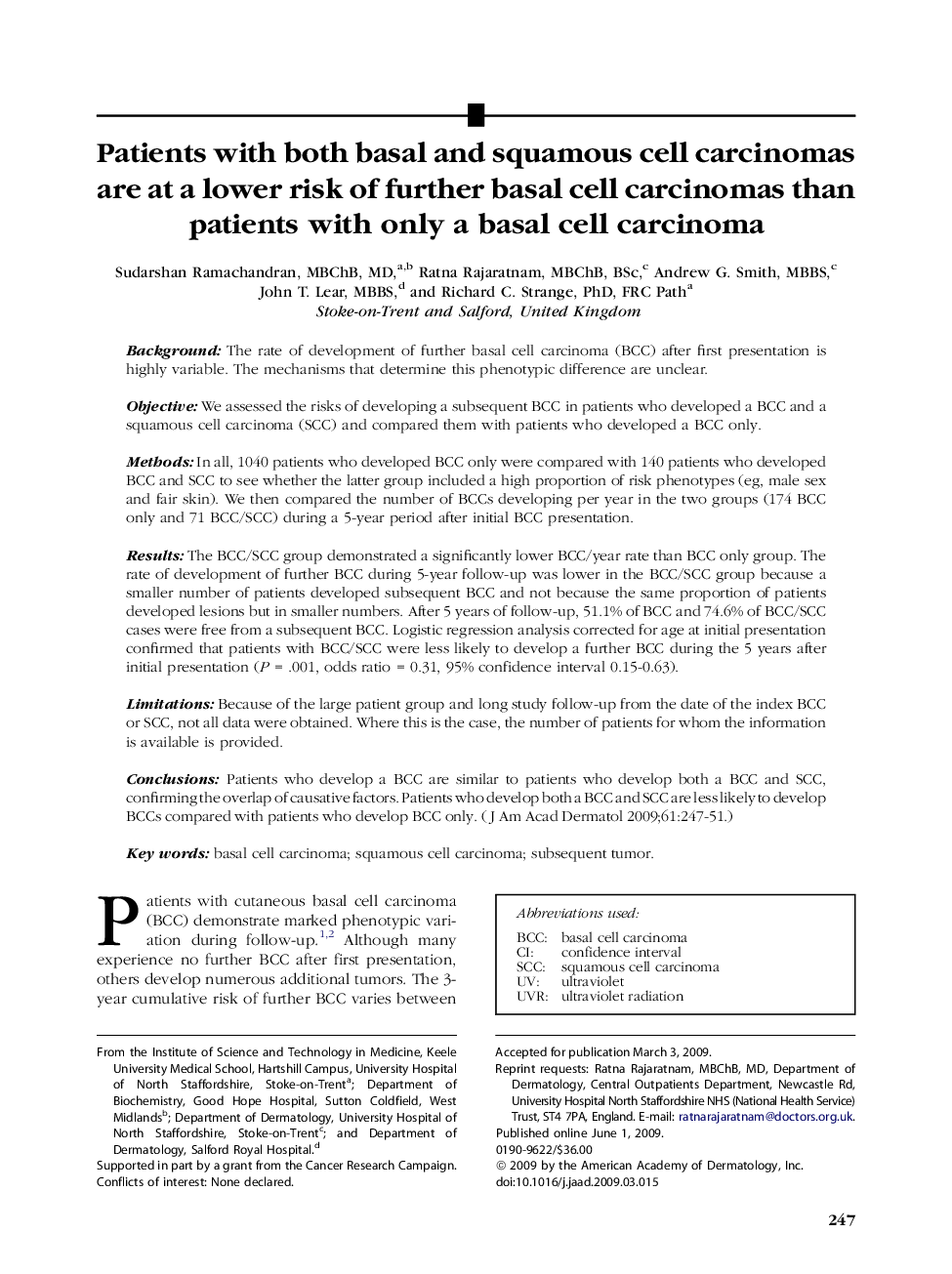| کد مقاله | کد نشریه | سال انتشار | مقاله انگلیسی | نسخه تمام متن |
|---|---|---|---|---|
| 3209460 | 1587604 | 2009 | 5 صفحه PDF | دانلود رایگان |

BackgroundThe rate of development of further basal cell carcinoma (BCC) after first presentation is highly variable. The mechanisms that determine this phenotypic difference are unclear.ObjectiveWe assessed the risks of developing a subsequent BCC in patients who developed a BCC and a squamous cell carcinoma (SCC) and compared them with patients who developed a BCC only.MethodsIn all, 1040 patients who developed BCC only were compared with 140 patients who developed BCC and SCC to see whether the latter group included a high proportion of risk phenotypes (eg, male sex and fair skin). We then compared the number of BCCs developing per year in the two groups (174 BCC only and 71 BCC/SCC) during a 5-year period after initial BCC presentation.ResultsThe BCC/SCC group demonstrated a significantly lower BCC/year rate than BCC only group. The rate of development of further BCC during 5-year follow-up was lower in the BCC/SCC group because a smaller number of patients developed subsequent BCC and not because the same proportion of patients developed lesions but in smaller numbers. After 5 years of follow-up, 51.1% of BCC and 74.6% of BCC/SCC cases were free from a subsequent BCC. Logistic regression analysis corrected for age at initial presentation confirmed that patients with BCC/SCC were less likely to develop a further BCC during the 5 years after initial presentation (P = .001, odds ratio = 0.31, 95% confidence interval 0.15-0.63).LimitationsBecause of the large patient group and long study follow-up from the date of the index BCC or SCC, not all data were obtained. Where this is the case, the number of patients for whom the information is available is provided.ConclusionsPatients who develop a BCC are similar to patients who develop both a BCC and SCC, confirming the overlap of causative factors. Patients who develop both a BCC and SCC are less likely to develop BCCs compared with patients who develop BCC only.
Journal: Journal of the American Academy of Dermatology - Volume 61, Issue 2, August 2009, Pages 247–251